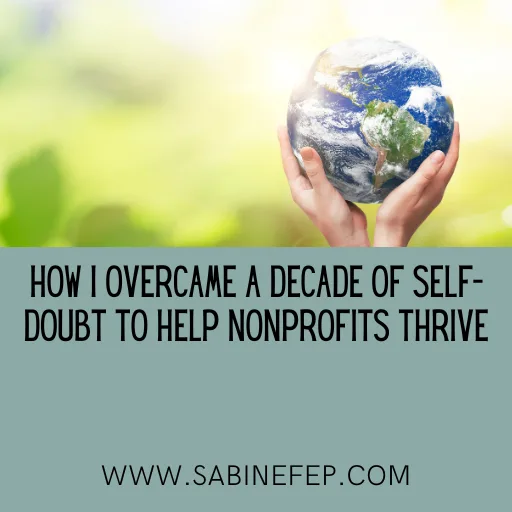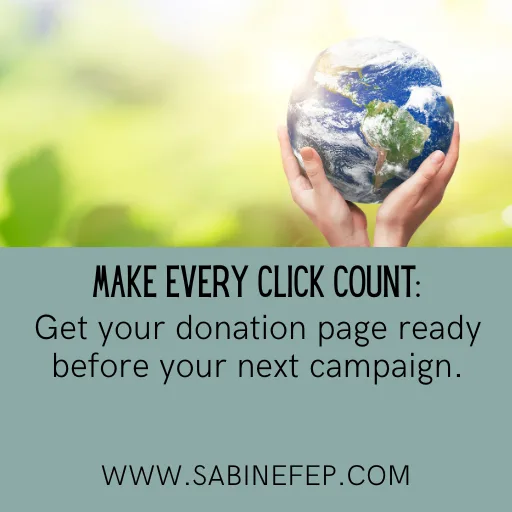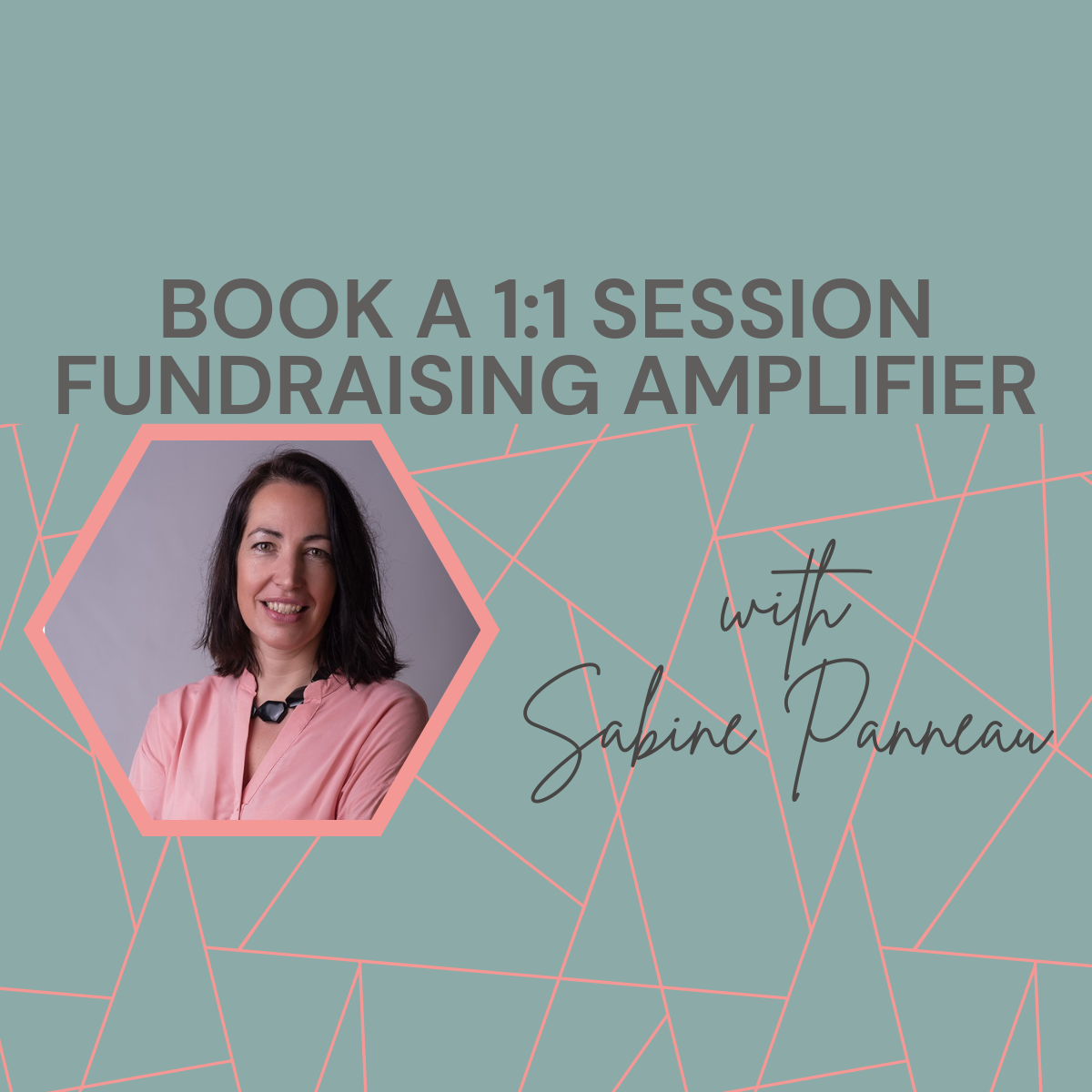What is SEO? A Simple Guide for Nonprofits

As a non-profiter, you may not be familiar with the best practices in digital marketing and SEO. However, I feel that everyone involved with the work of the charity can play a role in improving the SEO of the charity website. Let’s look at it in more detail and see what you can initiate today to be in your way to improve your SEO.
But first, what is SEO? SEO stands for Search Engine Optimization. It’s basically the art and science of making your website more visible in search engine results like Google, Bing, and Yahoo. When people search for something related to your charity, SEO helps ensure your website appears higher in those search results.
Think of it like a busy street. You want your charity to be the most prominent name on that street, so people can easily find you when they’re looking for what you offer. SEO is all about improving your website’s “street address” (its online visibility).
Why is SEO important for nonprofits?
A strong online presence can make a huge difference in your ability to reach potential donors, volunteers, and supporters. By improving your SEO, you can:
- Increase website traffic: More people will find your charity online.
- Enhance donor engagement: Connect with people interested in your cause. Funders are nowadays actively searching for organisations meeting their funding requirements. By increasing your visibility, you’re increasing your chances of getting invited to funding rounds.
- Boost your impact: Achieve your mission more effectively with increased visibility.
In the next section, I’ll cover my favourite part of SEO – how to create content that search engines love.
1- Content is King: Creating Value for Your Audience
The heart of successful SEO lies in creating high-quality, relevant content that your audience loves. Notice how I said “that your audience loves“, not that search engines love. Search engines reward content that provides value to users, so it’s essential to focus on creating content that people actually want to read.
How do they know that you provide value to your charity website readers? They spend more time reading the content, navigating to other pages on your website, signing-up for your newsletter or downloading your latest reports, etc.
Here are some tips for creating content that shines:
- Understand your audience: Know who you’re trying to reach and what information they’re looking for. Consider all your audiences – your charity recipients, their families or people involved in the cause you fight for, your volunteers, your staff, your donors (potential and existing ones) and your funders.When each one of them reaches your website, can they see where they’ll find relevant information?
Take a moment to look at your homepage and navigation bar. Take notes of what’s good, what could be improved and what’s missing.
- Choose relevant topics: Create content that aligns with your charity’s mission and goals.Apart from your About Us page, have you created content around your mission and your goals? If you’ve done it in the past, have you created content for this current year and your goals?
- Use keywords strategically: Incorporate keywords naturally into your content without sounding forced.Have you done some keyword research to find the ones that are relevant to your charity? If you’re not sure about keywords, I’ll cover more about them in the next section.
- Tell a story: Engage your readers with compelling narratives and personal stories.To be memorable for your supporters, you’ll want to engage with them using storytelling. Sharing stories allows you to convey emotions and your values and that’s what your readers will connect with.
- Visuals matter: Use images, infographics, and videos to enhance your content.Our role as communicators is to find 100 different ways to tell the same story. The story of your organisation, your mission, your values and your goals. Design tools such as Canva and AI have tremendously eased the process of creating content in a wide range of format.
- Keep it fresh: Regularly update your content to maintain relevance.When was the last piece of content published on your website? Do you have an editorial calendar in place? Are you repurposing existing content in different formats? Turn an interview into a blog post, a podcast episode into several social media short-form videos or an Instagram live into a newsletter.
Remember, content isn’t just about blogs and articles.
It can also include videos, infographics, and even social media posts.
The key is to provide value to your audience in a format they enjoy.
In the next section, I’ll go into more detail about keywords and how to use them effectively.

2- Keyword Magic: Unlocking Your Website’s Potential
Keywords are the words and phrases people use to search for information online. By understanding and using keywords effectively, you can help search engines find your website when people are looking for your charity’s services.
The best way to find those is by listening to your supporters, your donors, staff or anyone involved with your work. What are the words they use to describe your work? How do they call themselves? etc. All these will be clues on what others will search online to find you.
Here’s how to make the most of keywords:
- Keyword research: Identify the words and phrases your target audience is likely to use. You can use free tools like Google Keyword Planner to get started.
- Keyword placement: Incorporate keywords naturally into your website’s content, including titles, headings, and body text.
- Keyword density: Use keywords strategically without overstuffing your content.
- Long-tail keywords: Focus on longer, more specific keyword phrases to attract targeted traffic.
- Keyword variations: Use synonyms and related terms to broaden your reach.
Remember, it’s essential to balance keyword optimization with creating high-quality, readable content. Search engines prioritize content that provides value to users, so always keep your audience in mind.
In the next section, I’ll explain on-page optimization and how making strategic changes to your website can improve its search engine ranking.

3- On-Page Optimization: Making Your Website Search Engine Friendly
On-page optimization refers to the actions you take directly on your website to improve its search engine ranking. It’s about making your pages more attractive to both search engines and visitors. Some of these are easy to implement – ie you won’t need an expert and others are more technical.
Key elements of on-page optimization include:
- Title tags: These are the clickable headlines in search results. They should accurately reflect the page content and include relevant keywords.
- Meta descriptions: These short summaries appear below the title in search results. Write compelling descriptions that encourage clicks.
- Header tags: Use header tags (H1, H2, H3, etc.) to structure your content and highlight important keywords.
- Image optimization: Use descriptive file names and alt text for images to improve accessibility and SEO.
- Internal linking: Connect related pages on your website to help search engines understand your site’s structure.
- URL structure: Create clean and descriptive URLs that include relevant keywords.
By optimizing these elements, you’ll help search engines understand what your website is about and improve your chances of ranking higher in search results.
Now, let’s look at the importance of building backlinks to your website.

4- Building Backlinks: The Power of External Links
Backlinks are essentially votes of confidence from other websites. When other reputable sites link to yours, search engines see it as a positive signal, boosting your website’s authority. It can be done in many ways:
Here’s how to build quality backlinks:
- Create shareable content: Develop content that people naturally want to link to, such as informative guides, case studies, or original research. Going back to the concept I talked about earlier, your content should be of interest to your audience and others within your field will want to link to your content by including quotes, extract and adding a link back to the original piece.
- Guest blogging: Contribute articles to other websites in your niche to earn backlinks. Do you work with other organisations in your area or your field? Whenever you create content in common, make sure to link it to each other’s website. One organisation will publish the full content and the other will create a new blog about the original piece of content and link it so that the readers can see the full article. Every time you’re invited to speak on a podcast, always request to have your website mentioned in the episode description and then create a new blog on your website to invite your audience to listen to it
- Outreach: Contact relevant websites, journalists and other non-profit organisations to suggest PR opportunities.
- Influencer partnerships: Collaborate with influencers in your field to gain exposure and backlinks.
Remember, quality over quantity is key. Focus on building backlinks from reputable and relevant websites.
Next, I want to look at how to track your SEO progress.

5- Measuring Success: Tracking Your SEO Progress
Now that you’ve made some changes, it’s essential to monitor your efforts to see what’s working and what’s not. By tracking key metrics, you can make data-driven decisions to improve your website’s performance.
Here are some important metrics to track:
- Organic traffic: This measures the number of visitors coming to your website through search engines.
- Keyword rankings: Track the position of your website for specific keywords in search results.
- Click-through rate (CTR): This shows how often people click on your website when it appears in search results.
- Bounce rate: This indicates the percentage of visitors who leave your website after viewing only one page.
- Time on page: This metric measures how long visitors spend on your website.
- Conversion rate: Track the number of visitors who take a desired action, such as making a donation or signing up for a newsletter.
Tools like Google Analytics and Google Search Console can help you track these metrics.
Remember, SEO is an ongoing process. It takes time to see significant results. Be patient, analyze your data regularly, and make adjustments as needed.
Would you like to discuss potential next steps or any other SEO topics?

6- Next Steps and Additional SEO Tips
Going Beyond the Basics
While we’ve covered essential SEO fundamentals, there are additional strategies to enhance your nonprofit’s online visibility:
- Local SEO: If your charity operates in a specific area, optimize your website for local search results.
- Mobile Optimization: Ensure your website is mobile-friendly, as Google prioritizes mobile-first indexing.
- Technical SEO: Address technical issues like website speed, site structure, and XML sitemaps for optimal performance.
- Voice Search Optimization: Prepare your website for voice search queries by using natural language and long-tail keywords.
- Video SEO: Leverage video content to increase visibility and engagement.
Building a Sustainable SEO Strategy
Remember, SEO is an ongoing process. It’s essential to:
- Set realistic goals: Define clear objectives for your SEO efforts.
- Monitor and adapt: Regularly track your website’s performance and adjust your strategy accordingly.
- Stay updated: Keep up with the latest SEO trends and algorithm changes.
- Invest in SEO tools: Consider using SEO tools to streamline your efforts and gain valuable insights.
Additional Tips
- Focus on user experience: Create content that is valuable, relevant, and engaging for your audience.
- Build relationships: Network with other nonprofits and industry professionals to expand your reach.
- Leverage social media: Promote your content and engage with your audience on social platforms.
- Be patient: SEO takes time. Don’t expect overnight results.
Do you have any specific questions about your nonprofit’s SEO strategy?
Let’s Talk About Your Specific Challenges
I’d love to provide more tailored advice. To do so effectively, please share some specific challenges your nonprofit is facing related to SEO.
Here are some examples to get you started:
- Are you struggling with low website traffic?
- Do you have difficulty converting website visitors into donors?
- Are you competing with larger nonprofits for online visibility?
- Are you unsure how to allocate your resources for SEO efforts?
By understanding your specific needs, I can offer more targeted recommendations and solutions.
Additionally, if you have any questions about specific SEO terms or concepts, feel free to ask. I’m here to help!
Need help?
My specialised online fundraising services for non-profits go beyond fundraising. It’s about setting up your organisation for success, using the right tools and platforms to inspire action and foster a dedicated community of supporters.
Together, let’s transform your online platform into a powerful tool that amplifies your impact and drives results.
Book a free call to learn more and embark on your journey towards a more impactful and engaging online presence.
Here’s what I can help you with:
- Compelling copywriting and content writing: Create captivating website copy, engaging blog posts, and effective email marketing materials that resonate with your audience.
- Strategic email marketing: Design targeted email campaigns to nurture leads, build relationships, and foster ongoing supporter engagement.
- Streamlined online donation set-up: Simplify the process for your supporters to donate online, maximising your fundraising potential.
- Website creation tailored for non-profits: Develop a user-friendly and visually appealing website that showcases your mission, stories of impact, and opportunities to get involved.
Thank you for your dedication to driving positive change. Let’s embark on this digital journey and amplify your charitable endeavours together!
Mentoring programs for fundraisers and non-profit executives

Your LinkedIn presence needs your voice
I see it all the time. Fundraisers and charity leaders want to build their networks.They want to attract donors on LinkedInbut only reshare other people’s posts, without adding their own perspective. Stop relying on reposts. Your LinkedIn presence needs your voice. I...

How I overcame a decade of self-doubt to help nonprofits thrive
When Your Fundraising Confidence Disappears"Who am I to advise fundraisers after being away for over a decade?" This question haunted me in 2021 when I considered returning to the nonprofit sector after 11 years in the corporate world.Despite my early career...

How Fundraisers Can Transform Their LinkedIn Profiles (And Why It Matters)
Time to dust off that LinkedIn profile! Here's why it matters for your fundraising success (and exactly how to do it).Why Your LinkedIn Profile Is Your Secret Fundraising Weapon I'm Sabine Panneau, and I have a confession: I was a LinkedIn lurker for over 12 years. I...

Make Every Click Count: Get your nonprofit’s donation page ready before your next campaign.
Are you a small nonprofit struggling to raise funds online? Do you feel like your WordPress donation page isn't converting as well as it could be? If so, you're not alone. Many nonprofits face challenges in maximising their online fundraising efforts. The good news is...

Why LinkedIn Deserves Your Attention as a Charity Founder
As a charity founder, your time is precious, and every task competes for your attention. But what if dedicating just a little time to one platform could open doors to more visibility, stronger connections, and even new funding opportunities? LinkedIn isn’t just a...


